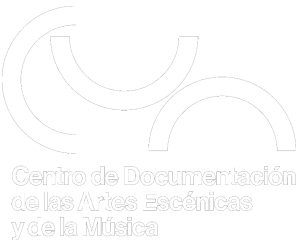Litanei und Ostinato in Bachs Passacaglia c-moll BWV 582 Klemens Schnorr
Detalles de publicación: Barcelona: Instituto Español de Musicología. Consejo Superior de Investigaciones Científicas, 2001Descripción: 10 pTítulo traducido: Letanía y ostinato en un pasacalle de Bach en c-menor BWV 582Tema(s): Bach, Johann Sebastian 1685-1750Recursos en línea: Haga clic para acceso en línea Resumen: RESUMEN: Texto en alemán. Aparece la reproducción de un estracto de partitura manuscrita. Abstract The theme of Bachs Passacaglia c-minor is based on the bass of Trio en Passacaille, a Christe-eleison-verset in the Messe du Deuziesme ton by André Raison. Bach transposes to c-minor and doubles the length of the theme, but is using the original form in four measures again for the following fugue. According to the contemporary alternatim praxis Raison's verset is the middle, central section of the nine-part Kyrie-cycle, the first part of the roman Ordinarium Missae, which is based on old litany-like acclamations and can be defined as a Litany too. May be that Bach's choosing an ostinato-form reflects the repetitive elements of a Litany and that the 33 entrances of the Passacaglia theme are related to the age of Christ. [eng] Abstrakt Das Thema von Bachs Passacaglia c-moll beruht auf dem Bass eines Trio en Passacaille, der Christe-eleisonVersette aus der Messe du Deuziesme ton von André Raison. Bach transponiert ihn nach c-moll und verdoppelt die Lange des Themas ftir die Passacaglia auf acht Takte, legt aber der anschlieBenden Fuge wieder die urspriingliche viertaktige Version zugrunde. Entsprechend der zeitgenossischen Alternatimpraxis bildet Raisons Versette den mittleren, zentralen Teil des neunteiligen Kyriezyklus, der als erster Teil des Messordinariums auf frühe litaneiartige Akklamationen zurückgeht und seinerseits als Litanei gelten kann. Es scheint, als widerspiegle die Komposition eines Ostinato das repetitive Element von Litaneien und als beziehe sich das 33fache Erscheinen des Themas in der Passacaglia auf das Lebensalter Christi. [ger] PALABRAS CLAVE: Música litúrgica, Pasacalles, Versiones musicales, Compositores, Análisis estilístico, Siglo XVII - XVIII Alemania.| Tipo de ítem | Biblioteca de origen | Colección | Ubicación en estantería | Signatura | Info Vol | URL | Estado | Notas | Fecha de vencimiento | Código de barras | Reserva de ítems |
|---|---|---|---|---|---|---|---|---|---|---|---|
| Prensa y revistas | CDAEM | Publicaciones periódicas Música | Retiro | PP Anuario Musical | 2001. Vol. 56 | Enlace al recurso | Consulta en sala | También Online | 0025353294284 |
Artículo en volumen homenaje al Prof. Dr. D. José Vicente González Valle
RESUMEN: Texto en alemán. Aparece la reproducción de un estracto de partitura manuscrita. Abstract The theme of Bachs Passacaglia c-minor is based on the bass of Trio en Passacaille, a Christe-eleison-verset in the Messe du Deuziesme ton by André Raison. Bach transposes to c-minor and doubles the length of the theme, but is using the original form in four measures again for the following fugue. According to the contemporary alternatim praxis Raison's verset is the middle, central section of the nine-part Kyrie-cycle, the first part of the roman Ordinarium Missae, which is based on old litany-like acclamations and can be defined as a Litany too. May be that Bach's choosing an ostinato-form reflects the repetitive elements of a Litany and that the 33 entrances of the Passacaglia theme are related to the age of Christ. [eng] Abstrakt Das Thema von Bachs Passacaglia c-moll beruht auf dem Bass eines Trio en Passacaille, der Christe-eleisonVersette aus der Messe du Deuziesme ton von André Raison. Bach transponiert ihn nach c-moll und verdoppelt die Lange des Themas ftir die Passacaglia auf acht Takte, legt aber der anschlieBenden Fuge wieder die urspriingliche viertaktige Version zugrunde. Entsprechend der zeitgenossischen Alternatimpraxis bildet Raisons Versette den mittleren, zentralen Teil des neunteiligen Kyriezyklus, der als erster Teil des Messordinariums auf frühe litaneiartige Akklamationen zurückgeht und seinerseits als Litanei gelten kann. Es scheint, als widerspiegle die Komposition eines Ostinato das repetitive Element von Litaneien und als beziehe sich das 33fache Erscheinen des Themas in der Passacaglia auf das Lebensalter Christi. [ger] PALABRAS CLAVE: Música litúrgica, Pasacalles, Versiones musicales, Compositores, Análisis estilístico, Siglo XVII - XVIII Alemania.


